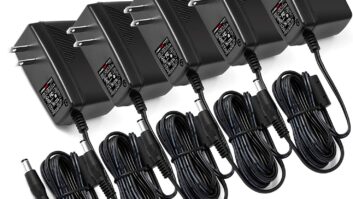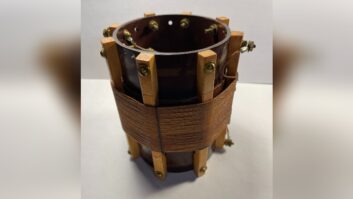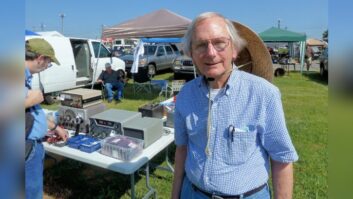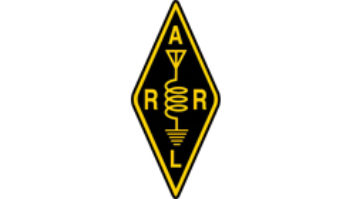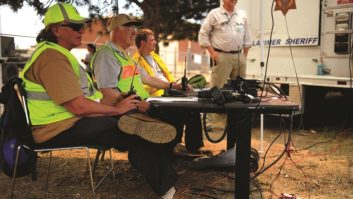We don�t talk often of the Hyperband or the role amateur radio plays in our profession. While many have tried, including me (it seems so easy) no one has ever adequately put words around why we often have such affection for a profession that � when laid out in black and white � really doesn�t stack up to what the skill set might bring in rewards elsewhere.�
Broadcast engineers often stay in the profession for a lifetime. Maybe you are the kind whose heart flutters at night when cold bridging a tower and the field intensity meter brings in your co-channel acquaintances like a ton of bricks, messing up your null. Maybe you reminisce about the days when a car radio, console radio � or your �special� DC-30 MHz radio � brought in stations from places you may never visit.�

As nighttime falls, the Hyperband comes to life.�
Photo: Scott Fybush�
As a Ham, you may have discovered the Hyperband while playing with 160-meter receive antennas. The 1610-1700 kHz Hyperband is next door to the 1800-2000 MHz Ham band. In Ham vernacular, 160-meters is the �gentleman�s band� or �top band� for all those romantic radio reasons. It�s the place where a guy or gal with desire to restore a legacy AM rig can legally use it. Practically, it is Ham radio�s only medium wave allocation (5W EIRP at 472-479 kHz hardly counts).
Before the AM birth control era, IBOC, narrow IFs and switching power supplies, listening to AM radio was a different experience. When 250 W was big, before there were clear channel blasters, it was really different. The Hyperband is the edge of the observable radio universe, where you can look back to that smidgeon of time after the big bang of radio where there are only a half-dozen tiny transmitters on any given frequency at night.
There are very few directional antennas or IBOC signals in the Hyperband. With a quiet antenna and a good radio in a good location you can hear a noise floor that�s close to nature�s � something that is impossible within 550-1600 kHz. Want a radio challenge? See if you can log each of the seven or so stations on each 10 kHz channel.�
Hams are just broadcast engineers who still wonder wide-eyed at what less power than a hairdryer can do. It�s easy to slip across the 100 kHz gap that separates the broadcast engineer who isn�t a Ham from the Ham who isn�t a broadcast engineer. If you think it�s the size of the toys, keep in mind that either side of the gap it is 1 kW and the Ham actually has more antenna options and Single Side Band.�
All our lives in this profession, it�s been about staying ahead of the technology curve and never looking back. The first with a computer, editor, solid state rig� the first with every new toy. Every now and again, it�s good to turn away from the ever steepening learning curve and look back at what made this career fun. Most of us have a radio that has become an ornament, a trophy. Some of us built �all-American-five� tube derivative kits that Heath and Allied Knight-Kit sold. Others built or bought solid state versions of the same when we wanted to know all about electrons and hear what all was out there. Every now and again, blow out the dust, replace a cap or tube and light her up.�
It used to be all about �arts and education.� Our current concentration on STEM � science, technology, engineering and math � isn�t a bad thing, but at the expense of art, it�s a more barren life and career. As I stand out here on a crisp cold night, the Milky Way and the meter light on my FIM all that can be seen, I�ve decided I don�t feel at all guilty or embarrassed about slipping away from taking that monitoring point reading into the Hyperband where a thousand watts a thousand miles away bounces the meter wildly.
There is still radio magic out there.
The Wandering Engineer is an industry stalwart who has been in broadcasting since the days of Marconi and Tesla. He gives his thoughts on the current state of broadcast engineering and the broadcast engineer.





